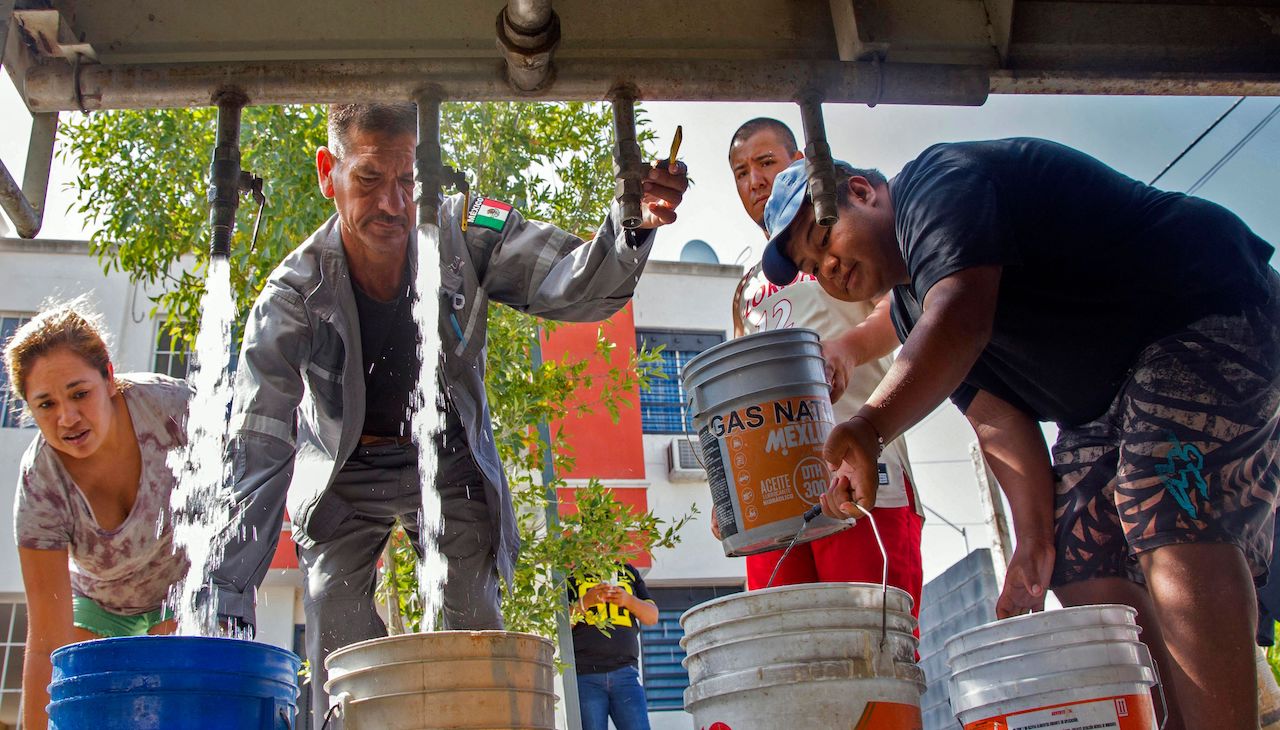
Extreme drought in Northern Mexico poses life threatening risks
This Summer has seen heat in record numbers across the globe including an extreme drought, leaving many without water for as much as 50 days.
As Europe grapples with extreme heat and forest fires, so is most of the Americas. In Northern Mexico specifically, drought conditions have been a constant fight, but more so now with millions having not seen a drip from their faucets in almost two months.
While it has mostly affected poor and marginalized communities in Mexico, it has also hurt many civilians in the metropolitan cities of Monterrey and even Mexico City, which sits in the center of the country. The only hope rests on the gift of rain from the sky, but even that is hard to come by in these regions, and even places where it is common.
According to an AFP report, the last six years for Monterrey has seen below average rainfall in conjunction with the ongoing drought.
Running water and showers are a forgotten luxury now, as most of Monterrey has had to deal with running water for only a few hours out every day to conserve what little is left. Scarcity is no longer just making daily life more challenging, but it has now reached a point where lives are at stake.
Last week, Mexico’s National Water Commission declared an emergency drought, allowing the government to take steps in guaranteeing supply.
Few houses in Mexico carry water tanks with exception to some in the bigger cities. As a result, the water crisis has caught many by surprise, as they have to use buckets to get water from tanker trucks — a reality that’s here to stay.
Authorities have begun to try to get all the remaining water out of La Boca. Engineer Raúl Ramírez, whose company installed a floating pump that is intended to extract as much as 105 gallons of water per second to be pumped into Monterrey. A region of beach towns that once saw hundreds of visitors, is now a cracked and dried up waterbed with no way of going back.
RELATED CONTENT
The current water crisis also comes after the country as a whole was ravished economically by the pandemic.
While Monterrey’s water crisis is worrisome, according to Aldo Iván Ramírez, a professor at Monterrey Technological University’s Engineering School, the problem is far worse in other parts of Mexico. Unlike the previous two droughts in 1998 and 2013, this one poses more complications because El Cuchillo Dam to the east of Monterrey, is the only reservoir with water.
Apart from climate change, another factor has been the La Niña effect, the cyclical cooling of different parts of the equatorial Pacific which can cause weather changes in certain parts of the area like Northern Mexico and the southwest of the U.S. There, droughts and extreme heat have increased as extreme measures will have to be taken much sooner than we think to ensure day-to-day living conditions.
According to Juan Ignacio Barragán, director general of the Monterrey Water and Sewer Services, many of the country’s reservoirs are drying up if not already empty. Satellite images revealed the near empty state of one the city’s biggest reservoirs, La Boca, and the city of Santiago also has a reservoir near empty. Another one of the major reservoirs feeding the city is Cerro Prieto, which currently sits at less than half of 1% of its full capacity. The previously-mentioned El Cuchillo, sits at 46% capacity.
In leading up to this, the state of Nuevo León that contains the city of Monterrey, reported back in May the hottest day on record that reached 104 degrees Fahrenheit. According to an AP report, Northern Mexico’s average annual temperatures by the end of the century will rise 5.4F-7.2F degrees.
While Mexico suffers, the record-setting temperatures across the globe in Europe and Asia in the last week alone paint the picture of the true reality of climate change and what the lack of attention and awareness has done not only to our generation, but any future generation’s chances of a good life as we look ahead into the drying oasis.










LEAVE A COMMENT: